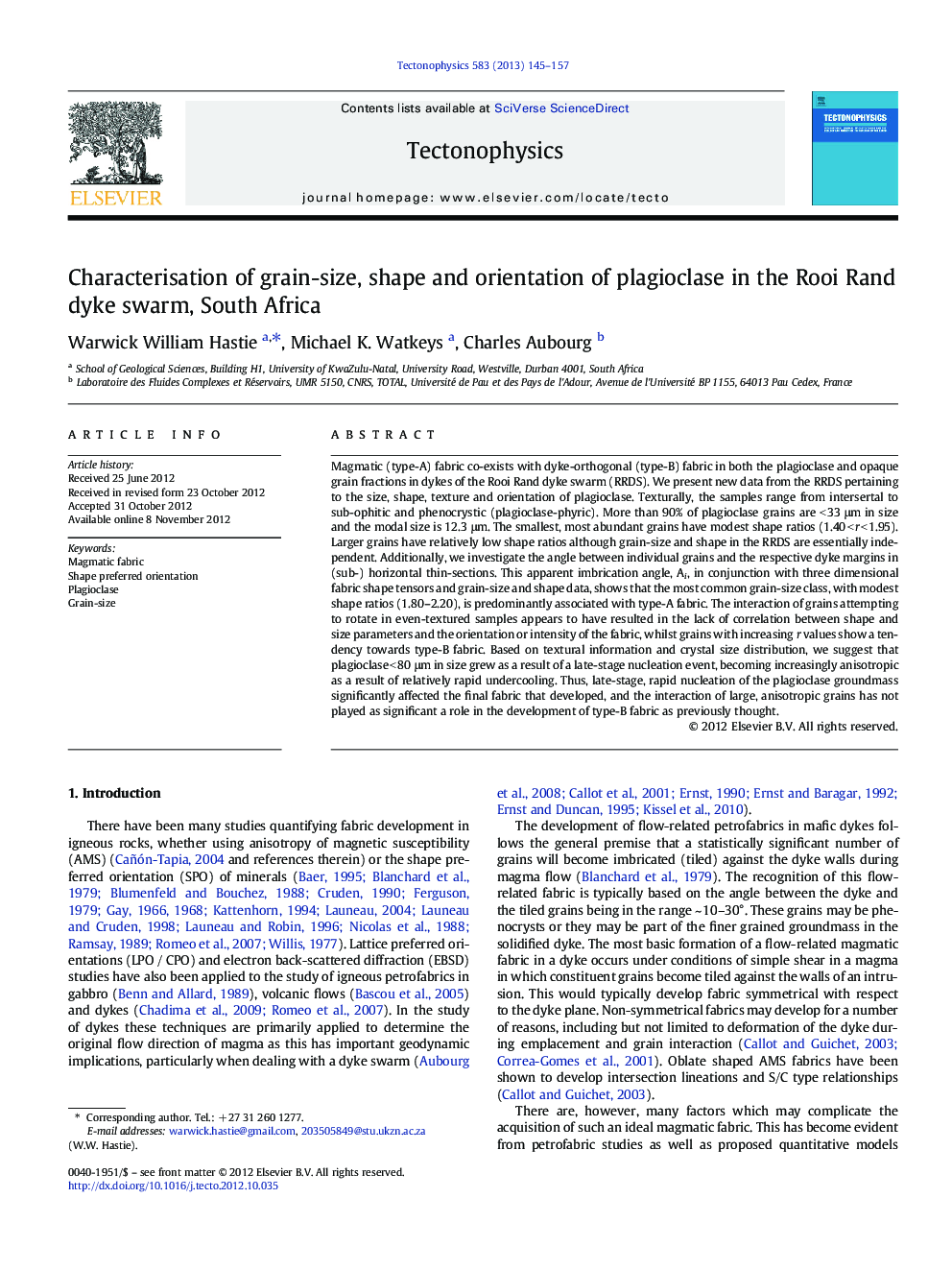| Article ID | Journal | Published Year | Pages | File Type |
|---|---|---|---|---|
| 6434175 | Tectonophysics | 2013 | 13 Pages |
Magmatic (type-A) fabric co-exists with dyke-orthogonal (type-B) fabric in both the plagioclase and opaque grain fractions in dykes of the Rooi Rand dyke swarm (RRDS). We present new data from the RRDS pertaining to the size, shape, texture and orientation of plagioclase. Texturally, the samples range from intersertal to sub-ophitic and phenocrystic (plagioclase-phyric). More than 90% of plagioclase grains are < 33 μm in size and the modal size is 12.3 μm. The smallest, most abundant grains have modest shape ratios (1.40 < r < 1.95). Larger grains have relatively low shape ratios although grain-size and shape in the RRDS are essentially independent. Additionally, we investigate the angle between individual grains and the respective dyke margins in (sub-) horizontal thin-sections. This apparent imbrication angle, Ai, in conjunction with three dimensional fabric shape tensors and grain-size and shape data, shows that the most common grain-size class, with modest shape ratios (1.80-2.20), is predominantly associated with type-A fabric. The interaction of grains attempting to rotate in even-textured samples appears to have resulted in the lack of correlation between shape and size parameters and the orientation or intensity of the fabric, whilst grains with increasing r values show a tendency towards type-B fabric. Based on textural information and crystal size distribution, we suggest that plagioclase < 80 μm in size grew as a result of a late-stage nucleation event, becoming increasingly anisotropic as a result of relatively rapid undercooling. Thus, late-stage, rapid nucleation of the plagioclase groundmass significantly affected the final fabric that developed, and the interaction of large, anisotropic grains has not played as significant a role in the development of type-B fabric as previously thought.
⺠Morphology and texture of plagioclase in the Rooi Rand dyke swarm are presented. ⺠Petrofabric sub-parallel (type-A) and orthogonal (type-B) to dyke planes coexist. ⺠Grains with shape ratios 1.80-2.20 are associated with type-A fabric. ⺠Larger grains (> 55 μm) have lower shape ratios than smaller grains (type-B fabric). ⺠Type-B fabric is associated with the plagioclase grains of high shape ratio (r > 7).
